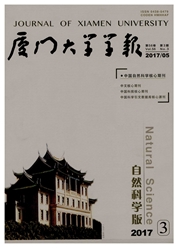

 中文摘要:
中文摘要:
扩增僧帽牡蛎(Crassostrea gigas angulata)的表皮生长因子受体(Epidermal growth factor receptor,EGFR)基因,并与pET32a(+)载体连接,构建pET32a(+)/EGFR重组质粒.将重组质粒导入大肠杆菌(Escherichia coli)BL21(DE3),成功地表达并纯化了一个50ku的重组蛋白.采用RT-PCR技术,检测了僧帽牡蛎幼体附着变态前后EGFR基因表达量的变化,结果表明,EGFR基因在附着变态前的浮游幼体阶段和附着变态24h后的稚贝阶段低表达,附着后1~6h强烈表达,这预示着EGFR基因在僧帽牡蛎幼体附着变态这一生物学过程中具有重要作用.
 英文摘要:
英文摘要:
Most benthic marine invertebrates have pelagic larvae that develop to competent stage and then settle on the bottom in response to physical,biological and chemical factors.Many previous investigators focused on exploring the inductive effects of chemical cues on larval settlement and metamorphosis.In this study,a ORF of epidermal growth factor receptor(EGFR) was amplified from sengmao oyster,Crassostrea gigas angulata and the target gene was cloned into prokaryotic expressing vector,pET-32a.After transformation,a soluble protein fused with a hexahistidine affinity ligand was expressed in E.coli BL21(DE3).The 50 ku recombinant protein was highly purified using affinity chromatography.As demonstrated by RT-PCR,EGFR was strongly expressed after 1 to 6 h of attachment of sengmao oyster larvae and weekly expressed before attachment and after 24 h of metamorphosis.And the result of RT-PCR indicated that EGFR played an important role during attachment and metamorphosis of sengmao oyster larvae.
 同期刊论文项目
同期刊论文项目
 同项目期刊论文
同项目期刊论文
 期刊信息
期刊信息
